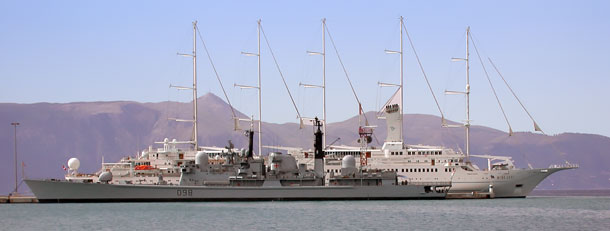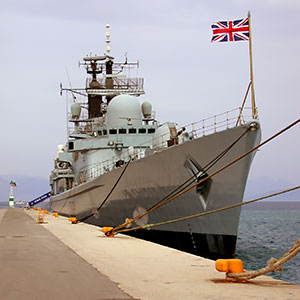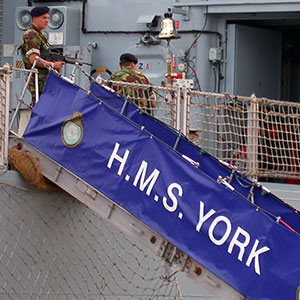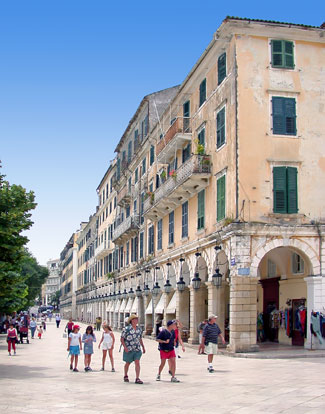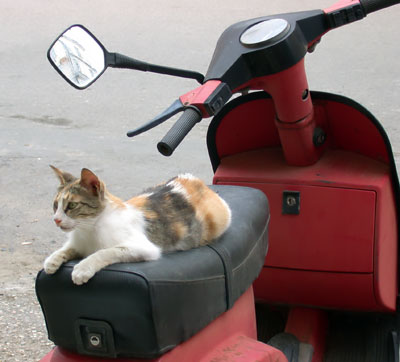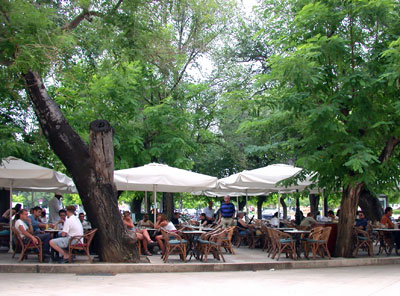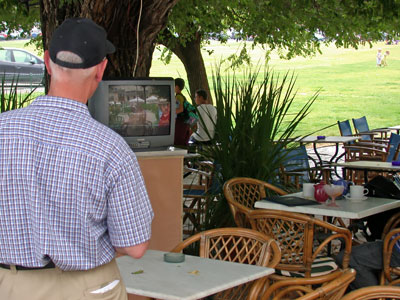Thursday 6 June: Corfu, Greece


We docked at Corfu Town at 1:00 in the afternoon. Directly across was the HMS York, a British naval vessel. Much of the crew had already disembarked on shore leave, although a few stragglers were still going down the gangplank, which was guarded by armed sailors.
At the north end of the Esplanade is the Palace of St Michael and St George, the oldest official building still standing in Greece. It was built by the British (1818-23), was summer residence to the King of Greece, suffered damage during the Greek Civil War and was then renovated as a gift of the British ambassador as a memorial to the British role in Greek history. Some of the rooms are quite plush. The building also houses the Museum of Asiatic Art, a large private collection. There is a quiet garden in which to sit in the shade on a hot sunny day, and views of the sea at the rear of the building.
Nearby is the historic center of Corfu. The buildings are quite old and house many interesting shops.
We walked away from all the shops into an area obviously patronized by the local population. While there don't seem to be as many small motor bikes as in other European cities, they are still popular for getting through traffic quickly. Even when parked, they have their uses.
The cricket ground was now filled with boys, practicing with their coach, but it didn't look like there would be any actual matches this afternoon.
The sun was out and it was getting late, so we decided to walk back to the ship by way of the Campiello and the Old Port. The Campiello is the oldest part of the city and lies between the Esplanade and the Old Port. The architecture isn't very interesting. The Byzantine Museum might have been interesting but had closed for the day. Our walk continued along the shoreline to the Old Port, which was not remarkable in any way. So we kept walking until we reached the New Port and the Wind Surf.
